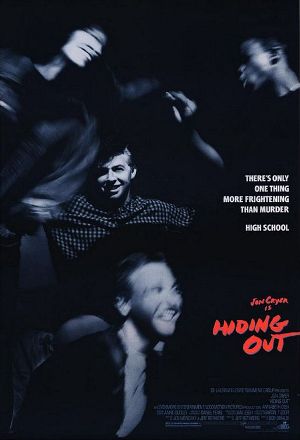 Andrew Morenski (Jon Cryer) is a stockbroker in the 1980s. What could be better than handling large amount of money during the decade of excess, right? The only problem is that Andrew and two of his colleagues have gotten involved with Mafia. And now, the Mafia wants them all dead. On the run from both the FBI and the Mob, Andrew tries to change his appearance. He shaves off his beard. He gives himself a bad dye job. No sooner has Andrew traded clothes with a homeless person than he is mistaken for a high school student.
Andrew Morenski (Jon Cryer) is a stockbroker in the 1980s. What could be better than handling large amount of money during the decade of excess, right? The only problem is that Andrew and two of his colleagues have gotten involved with Mafia. And now, the Mafia wants them all dead. On the run from both the FBI and the Mob, Andrew tries to change his appearance. He shaves off his beard. He gives himself a bad dye job. No sooner has Andrew traded clothes with a homeless person than he is mistaken for a high school student.
What better place could there be for Andrew to hide than a high school? Despite being 29 years old, Andrew fits right in and soon becomes one of the most popular students at the school. Andrew not only gets a girlfriend (Annabeth Gish) but he is even nominated to run for student body president. As Andrew discovers, the mob may be ruthless but they’re nothing compared to the student council.
Hiding Out may begin like a violent action thriller but it quickly reveals itself to be yet another John Hughes-influenced high school movie. Andrew starts out as a sleazy stockbroker but, by the end of the movie, he has transformed himself into Ferris Bueller. After spending his teenage years as a self-described “short, horny, hopeless dork,” Andrew is finally getting his chance to be cool. (“Well, I’m not short,” Andrew says.) The best scenes are the ones where Andrew occasionally forgets that he’s just supposed to be an apathetic teenager, like when he gets into a fierce argument with his history teacher over whether Richard Nixon should have been forced out of office or when he meets his girlfriend’s father and ends up giving him stock advice. There’s no denying that the plot is frequently dumb and features some massive plot holes but, largely due to Jon Cryer’s likable and energetic performance, Hiding Out is also a breezy and enjoyable movie.